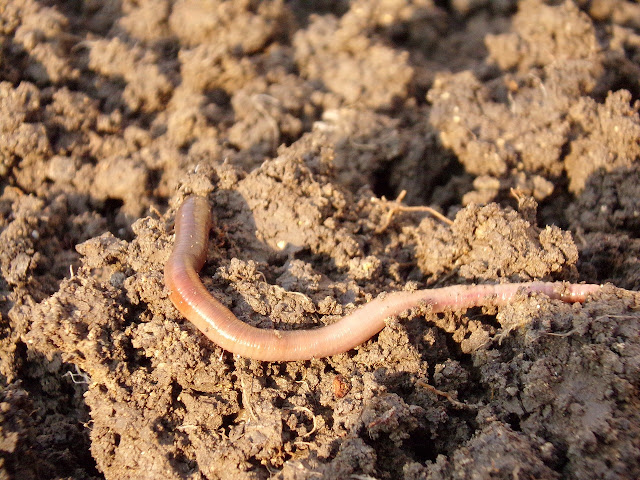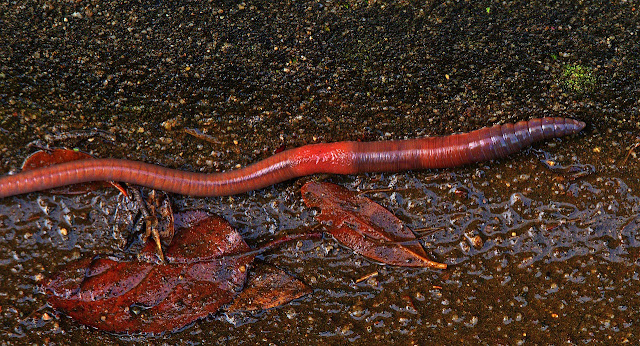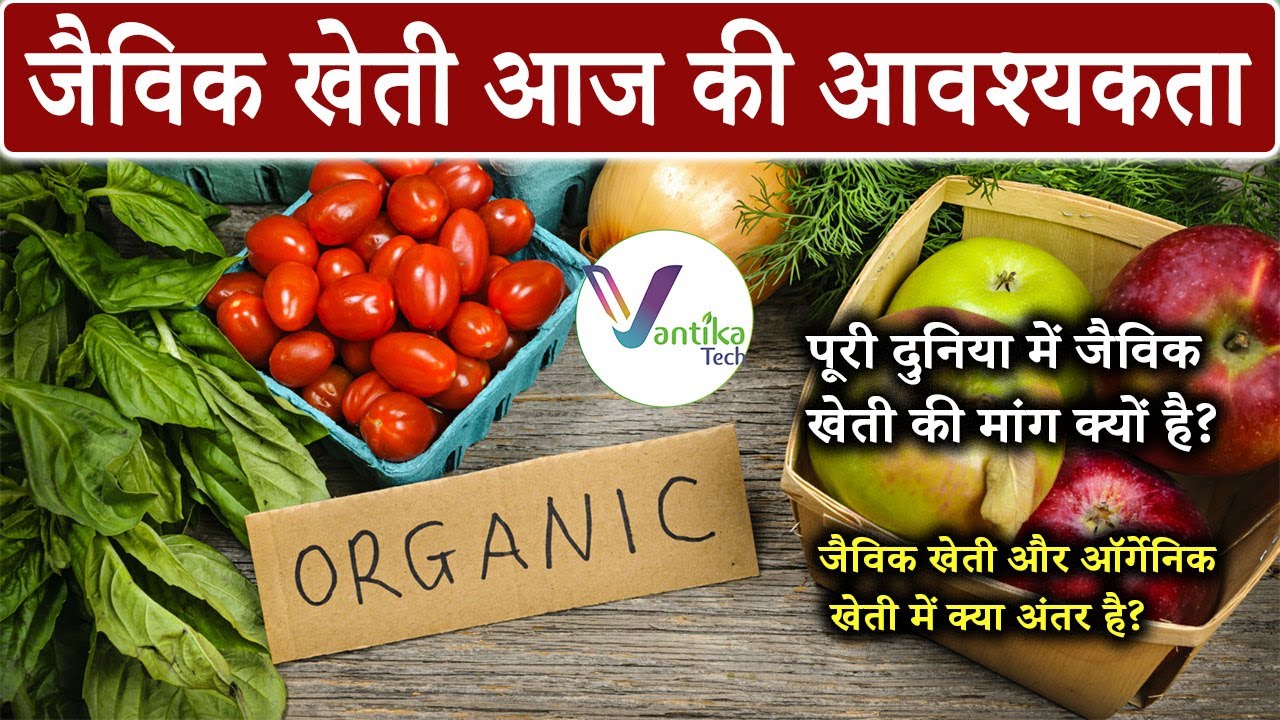In the realm of sustainable agriculture, vermicomposting stands out as a revolutionary practice, blending environmental consciousness with crop nourishment. At the forefront of this green movement is Vantika Tech, guiding farmers toward a more sustainable and organic approach to farming. Let's delve into the art of vermicomposting—a transformative journey for beginners venturing into sustainable farming.
The Magic of Vermicomposting in Agriculture:
Vermicomposting, the process of utilizing worms to break down organic matter into nutrient-rich compost, has become a cornerstone in sustainable agriculture. Vantika Tech leads the charge, emphasizing the significance of this eco-friendly approach to farming.
In the realm of sustainable farming, vermicomposting stands out as a magical process that transforms organic waste into a nutrient-rich elixir for the soil. This eco-friendly approach, utilizing the remarkable abilities of worms, has become a cornerstone in agriculture, offering a host of benefits. Let's delve into the transformative power of vermicomposting, unveiling the secrets that make it a game-changer for farmers.
The Worms' Role:
Worms, particularly red wrigglers and earthworms, play a pivotal role in vermicomposting. Their unique ability to consume organic waste and convert it into nutrient-dense vermicompost is unparalleled. These unsung heroes contribute to healthier soil, improved aeration, and enhanced microbial activity, laying the foundation for sustainable and productive agriculture.
Setting Up a Vermicomposting System:
Embarking on the journey of vermicomposting requires a well-established system. Farmers can start with a designated area, creating a conducive environment for worms to thrive. Varying sizes of containers, moisture regulation, and a balanced mix of organic waste are key components. A step-by-step guide can ease the process, ensuring an efficient and effective vermicomposting system on the farm.
Benefits for Soil Health:
The vermicompost produced through this process is a boon for soil health. Rich in essential nutrients, it enhances soil structure, promotes water retention, and encourages robust root growth. The organic matter in vermicompost acts as a natural fertilizer, fostering a sustainable cycle that benefits both the crops and the environment.
Elevating Crop Yields:
Farmers adopting vermicomposting witness a tangible impact on crop yields. The nutrient-rich vermicompost provides plants with a well-balanced diet, promoting healthier growth and increased resistance to diseases. This translates to better yields and, ultimately, improved economic returns for farmers.
Environmental Sustainability:
Vermicomposting aligns with the principles of environmental sustainability. By reducing the dependence on chemical fertilizers, it minimizes the environmental impact of conventional farming practices. The process also aids in waste management by converting organic waste into a valuable resource, contributing to a circular and eco-friendly agricultural model.
Importance of Worms in Organic Farming:
Worms, particularly red wrigglers and earthworms, play a crucial role in vermicomposting. Their ability to consume organic waste and transform it into nutrient-dense vermicompost is unparalleled. Vantika Tech highlights how integrating these humble creatures into farming practices contributes to healthier soil, improved aeration, and enhanced microbial activity.
Step-by-Step Guide to Setting Up a Vermicomposting System:
For beginners, the prospect of establishing a vermicomposting system might seem daunting. Vantika Tech simplifies this process with a comprehensive guide. From selecting the right worms to creating a suitable bin, the step-by-step instructions ensure a seamless setup, making vermicomposting accessible to all.
Embarking on the journey of setting up a vermicomposting system requires a meticulous and scientifically-driven approach. This step-by-step guide will help you navigate through the process, ensuring the creation of an efficient and sustainable vermicomposting environment.
1. Choosing the Right Worms:
Scientifically selecting the appropriate worm species is the foundational step. Red wrigglers (Eisenia fetida) are recommended for their voracious appetite and efficient composting capabilities. Their metabolic activities contribute significantly to the breakdown of organic matter into nutrient-rich compost.
2. Selecting an Appropriate Bin:
The choice of the bin is crucial to the success of your vermicomposting system. Scientifically explore various bin options, such as stacked bins or flow-through systems. Ensure the bin provides adequate aeration and drainage to create an optimal environment for worm activity.
3. Creating the Ideal Environment:
Maintaining the right environmental conditions is essential for the well-being of the worms. Scientifically monitor and control moisture levels to avoid waterlogged or excessively dry conditions. Keep the temperature within the range of 55-77°F (13-25°C) to promote optimal worm activity.
4. Feeding the Worms:
Scientifically manage the worms' diet to ensure a balanced and nutrient-rich composting process. Offer a mix of organic waste, including kitchen scraps (fruit and vegetable peels, coffee grounds), shredded newspaper, and yard waste. Avoid overfeeding and maintain a proper carbon-to-nitrogen ratio for optimal decomposition.
5. Harvesting Vermicompost:
Scientifically timed harvesting is critical to obtaining nutrient-rich vermicompost without disturbing the ongoing composting process. When the bedding material is transformed into a dark, crumbly texture, it's an indication that the vermicompost is ready. Gently push the compost to one side of the bin, and new bedding and food can be added to the empty side. The worms will migrate to the new food source, allowing you to harvest the finished compost.
By following these scientifically-backed steps, you can establish a vermicomposting system that not only efficiently processes organic waste but also contributes to the overall health of the soil. This scientifically-optimized approach ensures that you harness the full potential of vermicomposting for sustainable and eco-friendly agriculture practices.
Agricultural innovation continues to evolve, and one such revolutionary practice taking center stage is vermicomposting. This sustainable technique utilizes worms to transform organic waste into nutrient-rich compost, offering a plethora of benefits for soil fertility and crop production. In this blog, we delve into the fascinating science behind vermicompost and its transformative impact on agriculture.
Exploring the Science of Vermicompost:
At the heart of vermicomposting lies a symbiotic relationship between earthworms, organic matter, and soil health. Earthworms, particularly the red wrigglers commonly used in vermicomposting, consume organic waste materials. During digestion, these worms excrete nutrient-rich castings, creating vermicompost. The magic happens in these castings, which are teeming with beneficial microorganisms, enzymes, and plant-friendly nutrients.
Vermicompost stands out due to its optimal carbon-to-nitrogen ratio, providing a well-balanced nutrient profile for plants. The organic matter in vermicompost enhances soil structure, promoting improved water retention, aeration, and microbial activity. As a result, the soil becomes a thriving ecosystem, fostering healthier plant growth.
Increased Crop Yields with Vermicompost: Numerous case studies from around the globe highlight the substantial impact of vermicompost on crop yields. Farms incorporating vermicompost into their practices report enhanced soil fertility and increased productivity. Crops such as vegetables, fruits, and grains exhibit better resistance to diseases and pests, resulting in higher-quality yields.
The unique composition of vermicompost plays a pivotal role in unlocking nutrients for plant uptake. Its gradual release of nutrients ensures a sustained and balanced supply, contributing to prolonged plant health and vitality. These positive outcomes are not only economically beneficial for farmers but also align with the principles of sustainable and organic agriculture.
Comparisons with Traditional Fertilizers: Environmental Implications: In contrast to conventional fertilizers, vermicompost offers an eco-friendly alternative. Traditional fertilizers often lead to soil degradation, water pollution, and long-term environmental damage. Chemical runoff from these fertilizers can have detrimental effects on aquatic ecosystems and biodiversity.
Vermicompost, on the other hand, enriches the soil without harmful side effects. It fosters a harmonious relationship between agriculture and the environment by recycling organic waste and minimizing the need for synthetic chemicals. As the world seeks sustainable solutions, vermicomposting emerges as a beacon of environmentally conscious farming practices.
Tips for Large-Scale Integration:
Scaling up vermicomposting for large agricultural operations requires strategic planning and execution. Key considerations include selecting an appropriate worm species, designing efficient vermicomposting systems, and integrating it into existing farming practices. Farmers can benefit from consulting with experts, leveraging technology, and gradually transitioning to vermicompost-based fertilization methods.
As we witness the transformative potential of worms at work in agriculture, vermicomposting stands as a testament to the power of sustainable and science-driven practices. The journey from organic waste to nutrient-rich compost is paving the way for a greener and more productive future in crop production.
Certainly! If you have any specific questions or suggestions related to vermicompost, waste management, or sustainable agriculture, please feel free to comment below. Whether you're seeking more information, clarification on a topic, or have ideas to share, I'm here to help and engage in a discussion on vermicomposting and related subjects. Let's cultivate knowledge together
#vermicomposting #sustainablefarming #organicagriculture #soilhealth #cropyield #wormcomposting #nutrientrichcompost #ecofriendlyfarming #agriculturalscience #environmentalsustainability #soilmicrobes #redwrigglers #scientificfarming #organicwasterecycling #agriculturalbiodiversity #Vermicompost #WormCompost #EiseniaFetida #RedWorms #OrganicFertilizer #SoilAmendment #SustainableAgriculture #WormCastings #OrganicWaste #SoilHealth #Biofertilizer #OrganicGardening #Vermiculture #WormBin #WasteManagement









No comments:
Post a Comment